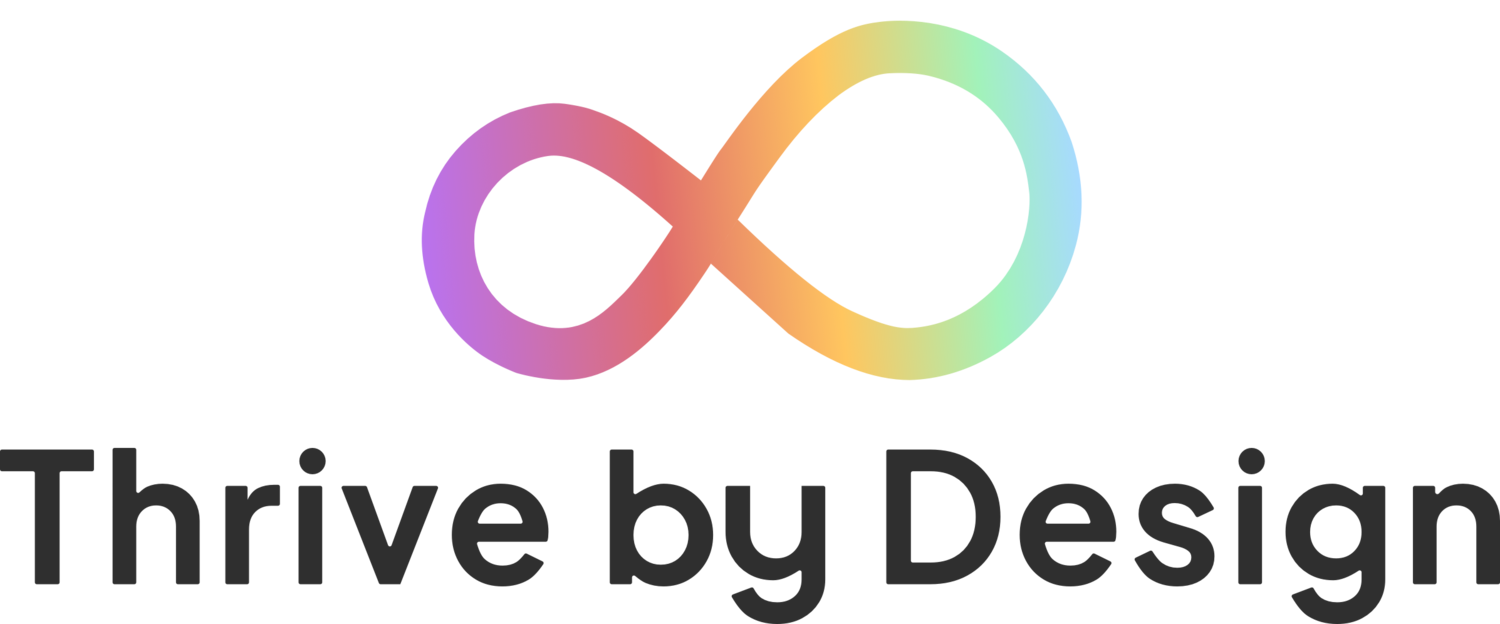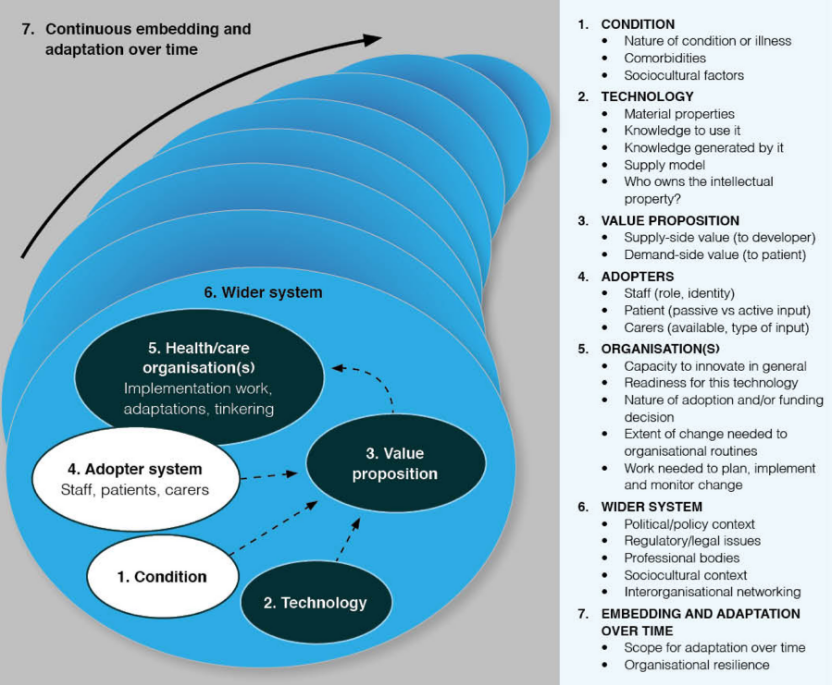NASSS-CAT TOOLKIT
Thrive by Design (formerly mHabitat) has been working with Professor Trisha Greenhalgh, Dr Chrysanthi Papoutsi and the Interdisciplinary Research in Health Sciences (IRIHS) unit from the University of Oxford for several years now to iteratively develop and promote a toolkit based on the NASSS framework. The aim of the complexity assessment toolkit (CAT) is to help innovators as well as implementers assess and deal with complexity in technology supported health and social care projects.
The NASSS-CAT tools are free and available to access online.
Introduction
An estimated 80 percent of technology projects in healthcare fail to be implemented successfully.
Professor Greenhalgh and colleagues set out to find out why through a systematic review and empirical case studies. The resulting NASSS Framework (Non-adoption, Abandonment, Scale-up, Spread, and Sustainability) includes seven domains:
the technology
the adopters
the wider system
the condition
the value proposition
the organisation(s)
embedding and adaption over time
Each domain can be rated from simple to complex, with more complex projects being associated with higher failure rates. The NASSS framework can be applied to technologies in health and care either prospectively (to guide design and implementation) or retrospectively (to learn from failure).
Figure 1. The nonadoption, abandonment, scale-up, spread, and sustainability framework for studying nonadoption and abandonment of technologies by individuals and the challenges to scale-up, spread, and sustainability of such technologies in health and care organizations.
Developing the toolkit
We tested Professor Greenhalgh’s initial questionnaire with four teams in various stages of development and implementation of their digital tool. Teams were positive about the concept of the tool, saying it was a good opportunity to reflect and it helped flag up issues and risks they hadn’t considered. They also made numerous suggestions to improve the content, such as improving the instructions, terminology and scoring system.
We used these insights to generate a new version, which was tested at a workshop for innovators. Twelve participants provided feedback and five were interviewed in more depth. Overall, the innovators were very positive: they liked the tool, thought it was useful, relevant and easy to understand.
The first suite of NASSS-CAT tools were created in Microsoft Word and whilst they attracted extensive interest from researchers, clinical teams and policymakers, requests were made for more interactive ‘electronic’ versions of the tools to support planning and evaluation activities across teams. During 2020-21, together with a co-design group, Thrive by Design, IRIHS and Ayup Digital worked to redesign two of the NASSS-CAT tools utilising online spreadsheet technology available through Google Suite and Microsoft 365 to offer real-time collaboration and on/offline working.
Feedback
Some feedback from the innovators after the workshop:
“I’ve been really impressed with the wisdom, enthusiasm and energy of the mHabitat (now Thrive by Design) team as we’ve worked together on the NASSS-CAT tool. Watch this space for more developments!”
“The NASSS structure is really valuable, being able to score it and focus on high risk areas quickly. It’s good to be able to put a framework on the experience I gathered in the past eight years.”
“The NASSS questionnaire was invaluable. Made me feel reassured; we’re doing better than we think we are! It was good to be able to tick the different topics. It’s great it’s specific to digital health, puts structure in place and allows us to reflect on where we are, and where we should be, allows us to set priority levels. It’s simple, straightforward”
“When I listened to the talk about the academic paper, I thought this is all a bit far away and not directly relevant to me, but then the assessment tool put it into practise and it was a bit of a wake up call - I knew about some of these issues but hadn’t really asked myself to respond to the issue”
NASSS-CAT in use
The Health Foundation:
Improving the success of complex technology-supported change: digitisation and empirical testing of the NASSS-CAT tools
National Centre for Biotechnology Information:
Beyond Adoption: A New Framework for Theorizing and Evaluating Nonadoption, Abandonment, and Challenges to the Scale-Up, Spread, and Sustainability of Health and Care Technologies


